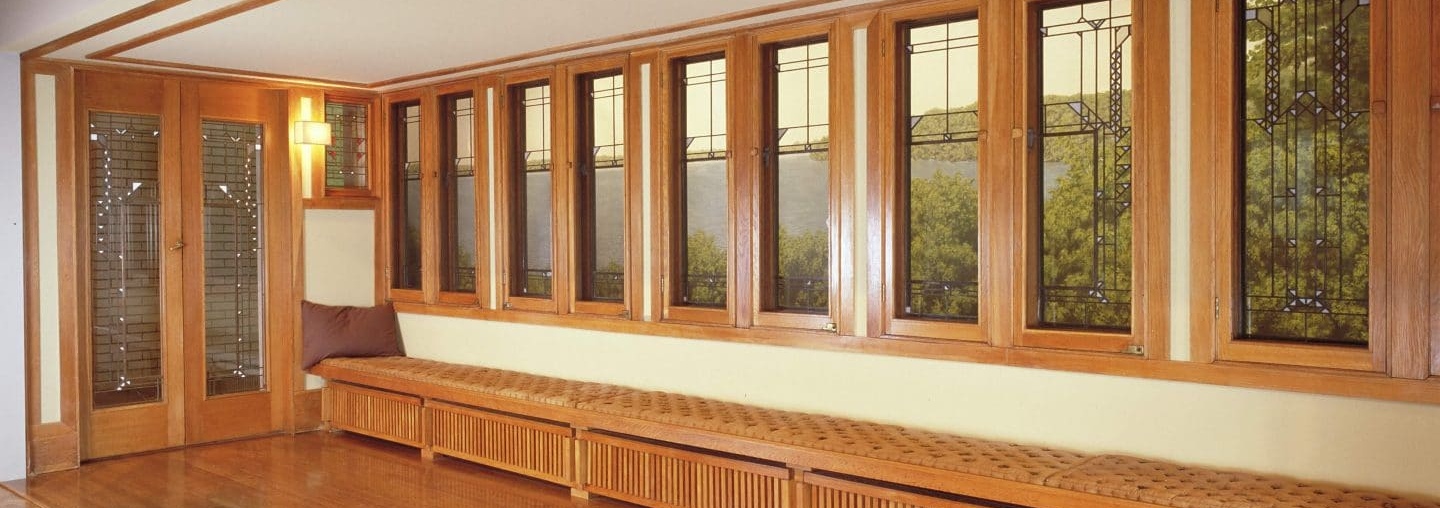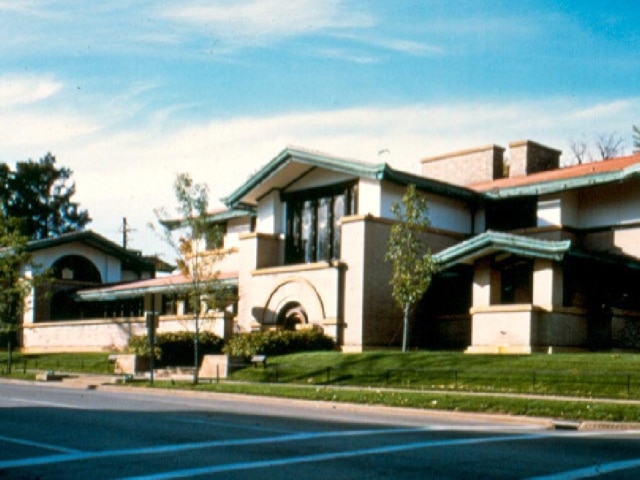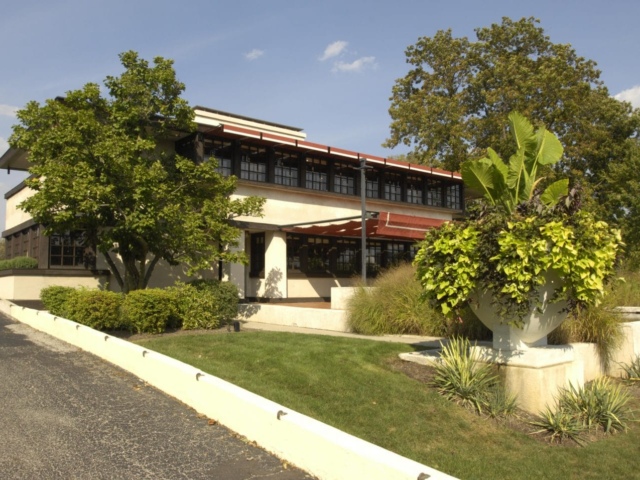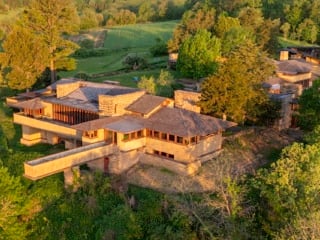
Francis Little House II (Hallway Reconstruction)
Originally constructed on the shores of Minnesota’s scenic Lake Minnetonka, the extraordinarily large and complex Francis Little House II was among Wright’s richest expressions of the Prairie aesthetic and the last of his Midwestern Prairie houses.
Characteristically long and low, the house featured windows spanning the entire lakeside elevation. Although Wright drew elaborate designs for art glass windows, Francis Little did not want their intricate pattern to obscure his lake view. To compromise, the windows throughout the house maintained a clear central panel with an intricate border. When the house was slated for demolition due to the Littles’ failure to secure a suitable buyer or alternate use for the structure, the Metropolitan Museum of New York stepped in. The Met saved the critical parts of the structure and they were then divided amongst three separate institutions: the Metropolitan Museum of Art, the Minneapolis Institute of Art and the Allentown Art Museum.
The bedroom hallway, on permanent display at the Minneapolis Institute of Art, measures 18 x 5-1/2 feet and contains ten tall windows, two small interior windows, and two pairs of leaded-glass French doors. The ten windows on display constitute part of a larger scheme, originally comprised of eighteen windows.
The living room installation provides the only opportunity to experience a Wright-designed domestic space in New York City. The formal room functioned primarily as a music room (Mary Little studied piano under Franz Liszt), and served as a magnificent venue for recitals and entertaining. Every architectural and decorative detail contributes to the overall visual harmony of the space. Minimizing the division between interior and exterior, twelve paired art-glass panels line each side with leaded-glass panels lit overhead. The 55-foot living room is one of Wright’s most spacious domestic interiors from this Prairie period.






